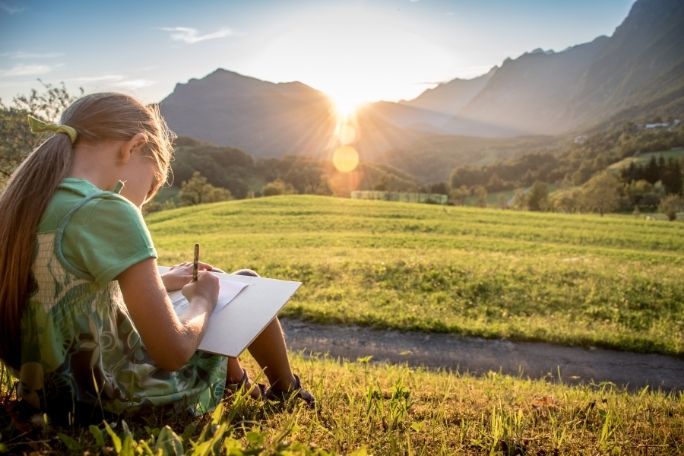Lesson summary
Students explore how artists are inspired by places in nature. Students begin by investigating what ‘inspiration’ means, and how being inspired can lead us to create art and/or take action. Students explore the sources of inspiration for other artists, and then think of a place in nature that is special to them and that can inspire them to make art. Students will then create a watercolour drawing of their special place in nature, and will share their artwork with classmates, reflecting on the way artworks can share messages about caring for our environment.
Learning intentions:
Students will...
- understand that places in nature can inspire us to make art
- understand that artworks can convey messages that they want to share
Success Criteria:
Students can...
- describe what inspiration is
- explain three places in nature that are important to them and why
- use a range of watercolour drawing techniques
Lesson guides and printables
Lesson details
Curriculum mapping
Australian curriculum content descriptions:
Year 3 & 4 Visual Arts:
- Explore ideas and artworks from different cultures and times, including artwork by Aboriginal and Torres Strait Islander artists, to use as inspiration for their own representations (ACAVAM110)
- Use materials, techniques and processes to explore visual conventions when making artworks (ACAVAM111)
- Present artworks and describe how they have used visual conventions to represent their ideas (ACAVAM112)
Year 4 HASS:
- The importance of environments, including natural vegetation, to animals and people (ACHASSK088)
Syllabus outcomes: VAS2.2, GE2-1, GE2-2, GE2-3.
General capabilities: Critical and creative thinking.
Cross-curriculum priority: Sustainability OI.2.
Relevant parts of Year 3 & 4 Visual Arts achievement standards: Students plan and make artworks that communicate ideas.
Relevant parts of Year 4 HASS achievement standards: Students identify the interconnections between components of the environment and between people and the environment.
Unit of work: Creative Sustainability – Year 3 & 4.
Time required: 60 mins.
Level of teacher scaffolding: Medium – facilitate class discussion, oversee self-portrait planning and creation.
Resources required
- Student Worksheets – one copy per student
- Watercolour pencils, paper, brushes
- Watercolour Techniques Handout
- Art Inspiration Planning Questions
- Art Inspiration Flashcards
- Nature Inspiration Flashcards (NOTE: Print both sets of flashcards and cut each flashcard in half and glue the questions to the back of the corresponding image)
Skills
This lesson is designed to build students’ competencies in the following skills:
- Collaboration
- Communication
- Community engagement
- Creativity
- Critical thinking
Additional info
Faber-Castell has long understood the importance of creativity to all people, especially to young people. It is also continuously searching for environmentally friendly processes and high-quality materials to enhance children’s creative experience throughout every development phase. For more information about Faber-Castell, click here.


Welcome back!
Don't have an account yet?
Log in with:
By signing up to Cool.org you consent and agree to Cool's privacy policy to
store, manage and process your personal information. To read more, please see
our privacy policy here(Opens in new tab).
Create your free Cool.org account.
Many of our resources are free, with an option to upgrade to Cool+ for premium content.
Already have an account?
Sign up with:
By signing up to Cool.org you consent and agree to Cool's privacy policy to
store, manage and process your personal information. To read more, please see
our privacy policy here(Opens in new tab).